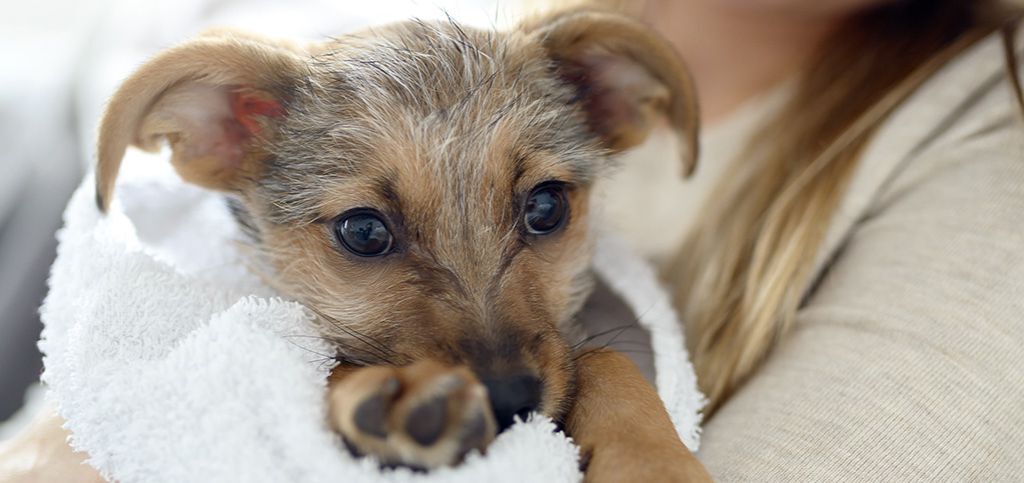How do I bath a month-old puppy?
There are many things that could impact on your puppy’s natural defenses. Such, for example, as to whether or not his mother has been vaccinated, how long he’s been suckled for, and even the particular characteristics of each dog, these are all determining factors.
During the first 3-4 weeks of life, the puppy's immune system is developing, which means that these weeks are the most critical ones for him in this sense. At this time you need to be especially careful to avoid anything that could possibly pose a threat to his health.
The importance of body temperature
One important aspect is body temperature. A normal temperature for an adult dog is between 37.8 and 39.2 degrees centigrade (38.5 on average). In the case of newborn puppies however, normal temperature is between 35 and 36 degrees; this then gradually increases until reaching the temperature of an adult dog at around 4 weeks of age. This means that the greatest threat to a puppy’s survival up until that point is hypothermia.
If your puppy's temperature falls below the normal range, his organism won’t yet be able to compensate. If he gets cold, this could also lower his defences, which would make him much more vulnerable to any infection he might be exposed to.
So can I bath a month-old puppy? Preferably not
In order to avoid risk, it is not advisable to bath your puppy during the first month of his life. The best time to do it is after he’s had his vaccinations - exactly when this can vary depending on which protocol is adopted.
Usually vaccinations are administered between 6 and 12 weeks of age.
At this point, when he’s 12 weeks old, your puppy will still be in the socialisation period, a time when he’s learning and adapting to new experiences.
How should I bath him?
As puppies don’t have very complex hygiene requirements, in order to avoid taking unnecessary risks it’s a good idea to dry bath him using a product that’s specifically formulated for puppies. Using a damp sponge or dog wipes, you can clean the areas that need to be cleaned. In this way you’ll make sure your puppy doesn't get cold.
Guidelines for bathing a puppy
Once your puppy has had his vaccinations, or if you really have no other choice and need to bath him earlier than this, it's important to follow these guidelines.
- Temperature. The ambient temperature needs to be quite high (30 degrees centigrade during the first week, then you can gradually turn down the heat) and the water should be good and warm.
- Specialised products. Use products that are specifically formulated for puppies. Their skin and fur will be very sensitive to any other kind of product.
- Bath size. It’s important that the recipient you choose for your puppy's bath is the right size for him. You can use a sink or a bowl.
- Take care with eyes and ears. You need to be especially careful with your puppy’s eyes and ears, making sure that shampoo doesn’t get into them, and avoid getting water in his ears as well.
- Drying. After the bath, carefully dry your puppy as quickly as possible. You could use a hairdryer, always taking care not to burn him.
- Brushing. If your puppy is a long-haired breed of dog, brush him gently.
- Reward. After the bath, make a fuss of him and give him treats. In this way bath time will have positive associations for him, and this will make things easier when you want to bath him in the future.
Prevention is vital for your puppy's health. It’s always advisable to avoid exposing your puppy to potentially dangerous situations, situations that could cause hypothermia, hypoglycemia, or dehydration. This is particularly true in the case of unweaned puppies. To avoid risks, it’s important to provide them with a warm environment, an appropriate diet, and to make sure that they receive all the necessary vaccinations. If there’s anything you’re not sure about, always consult a vet.
 Copy link
Copy link
 Publish on Facebook
Publish on Facebook
 Publish on Twitter
Publish on Twitter
 Publish on WhatsApp
Publish on WhatsApp
